Hand and finger strength is very important for holding a pencil correctly, fastening clothes and other fine motor skills. Did you know there are over 30 muscles in the hand and forearm? Muscles in the forearm control elbow, wrist and finger movements while the much smaller muscles in the palm of the hand control smaller movements of the thumb and fingers. If these muscles develop slowly or aren't strengthened children can find it difficult to grip and manipulate small items which can make learning to write much harder.
Luckily there are lots of fun science activities that will help children develop stronger hand strength and fine motor skills as well as hand eye coordination and many other skills that will help in a learning environment.
Fine Motor Skills Activities
Water based fine motor skills activities
Use a water spray bottle to water plants or test materials to see how waterproof they are. In the activity below we painted coins and tested different bags to see if they kept the coins dry.
You could even clean up some outdoor toys or add some paint to the sprayers to make a picture.
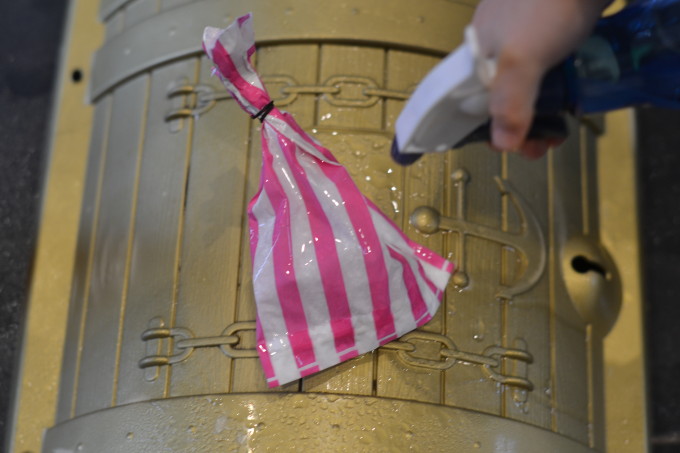
A stiff syringe requires strength to manipulate, we took the opportunity to practice reading the scale and recognising numbers too.
You can make the activity as simple as playing with a syringe in the bath or we used ours to squeeze warm water onto ice recording how fast it melted.
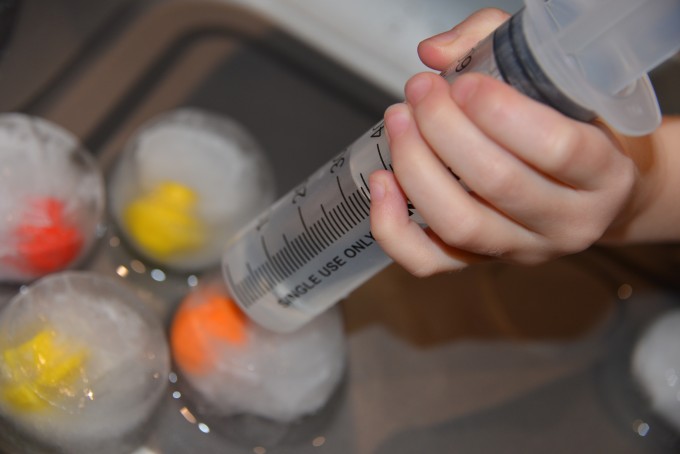
Messy fine motor skill activities
This squirt gun painting from Fireflies and Mudpies would be a fantastic creative activity.
Try squeezing and wringing out different types of sponges to see which absorb the most water or how about squeezing a pipette of vinegar over our baking soda stars.
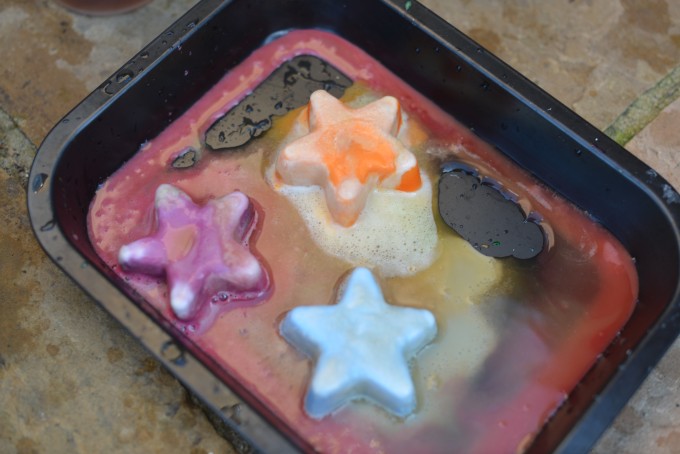
Cornflour goo is a lovely dense liquid perfect for picking up and squeezing using the whole hand, encourage children to squeeze a handful till it becomes solid and then let go watching it drip through their fingers.
If you add little counters, marbles or other small items children can use tweezers to pick them up, the cornflour means little hands have to grip the tweezers a bit harder for it to work.
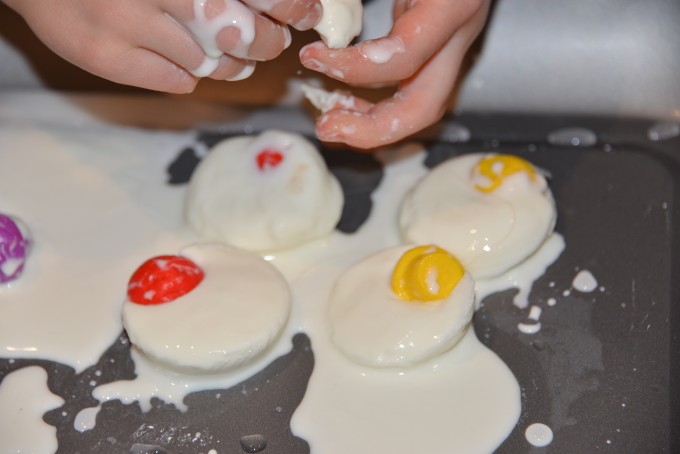
We made this slime by soaking chia seeds in water ( idea taken from the lovely Fun at Home with Kids )for a few hours and then adding cornflour, the texture was very soft, but great for hiding little bugs which children can then try to pick up with tweezers or other grab type item. We love the helping hands kit from Learning Resources.
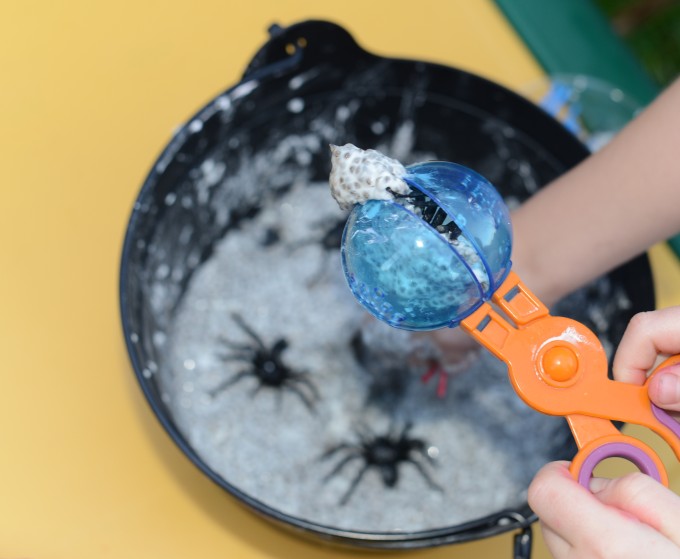
We added a bit of maths to the activity by writing some numbers on these muffin counters and tried to find pairs of counters that made 10.
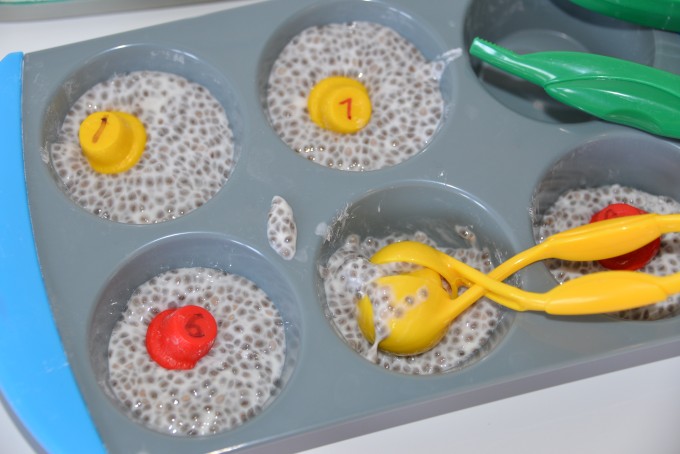
Sensory Trays
Try a Cat in the Hat sensory tray, you could add numbers or letters to this as well as magnets and other small item to collect and sort.
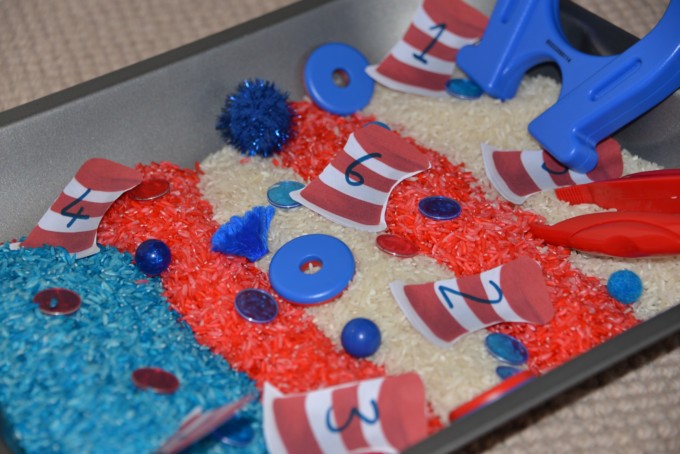
Our space themed rice sensory tub kept my 5 and 6 year old entertained for a very long time. They used tweezers to remove the marbles, matched marbles to planets and then practised writing numbers on stars so we could find number pairs that added up to 10.
We also added magnets and some magnetic balls into the mix at the end.
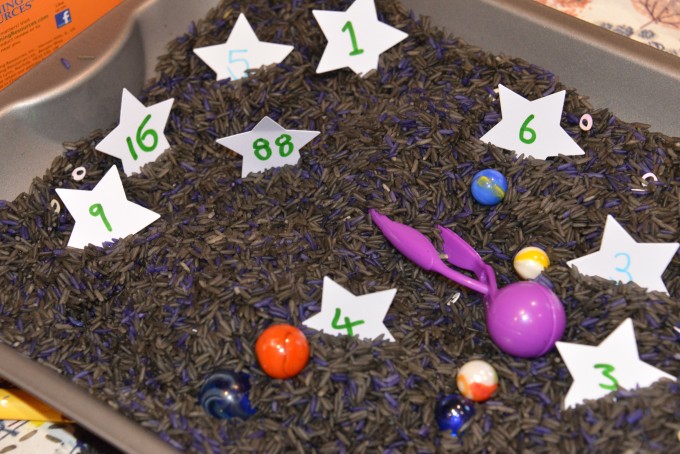
Make fizzy paint in squeezy bottles for another fun artistic way to get hand muscles moving. Once children have finished with the paint, they can use a dropper to add vinegar.

Fine Motor Skills for older children
Squeezy bottle rockets are great fun, children just need to squeeze the bottle and watch the rocket fly into the air. Experiment with adding weight to the rocket and using different items to seal your bottle at the same time.
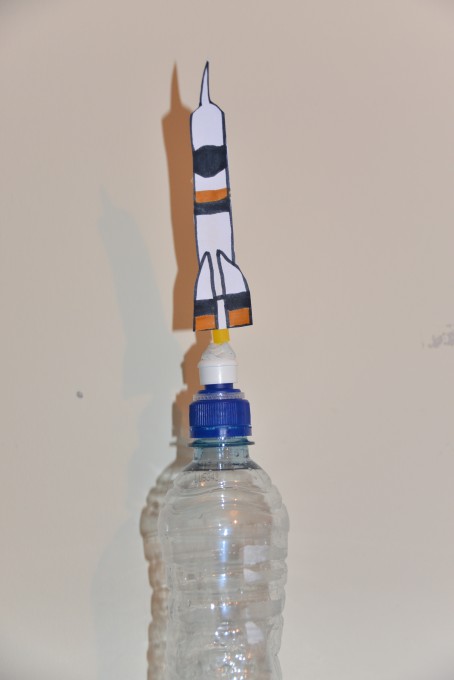
Explore forces with play dough by pushing, pulling and stretching. Poking fingers into play dough or sticking in pipe cleaners, sticks or straws makes it a fantastic sensory experience.

We love this play dough inventors workshop from The Imagination Tree too and her beautiful rainbow collage.
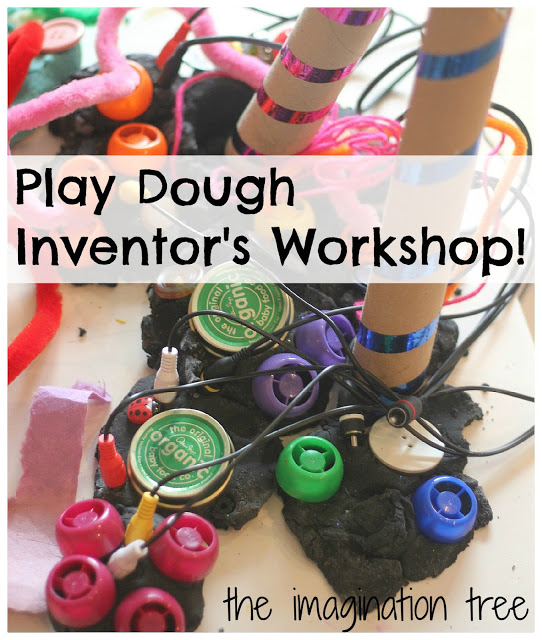
Good quality velcro is also great for working muscles in the hands, we used pipes on a big board to make a changeable marble run. The pipes were quite hard to manipulate around the board so great for working hand and arm muscles.

Making ice cream from milk or cream and ice requires a lot of manipulation of the bag, just be careful not let hands get too cold.

Thread pipe cleaners into a colander to make a funny hat.
LEGO Fine Motor Skills Activities
LEGO is great for improving fine motor skills, try building towers with two hands, then one hand, then just the non writing hand.
Building towers with DUPLO or LEGO thinking about how to make them stable is anther great activity for exercising little muscles or use smaller LEGO to make repeating patterns.
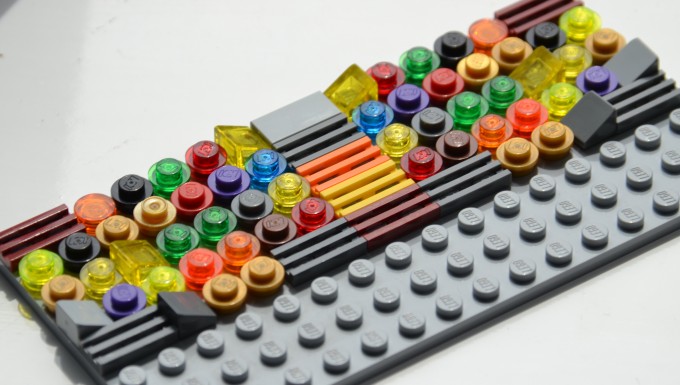
We also used LEGO to model the 4 seasons. Add thing the tiny pieces to this was great for hand/eye coordination too.
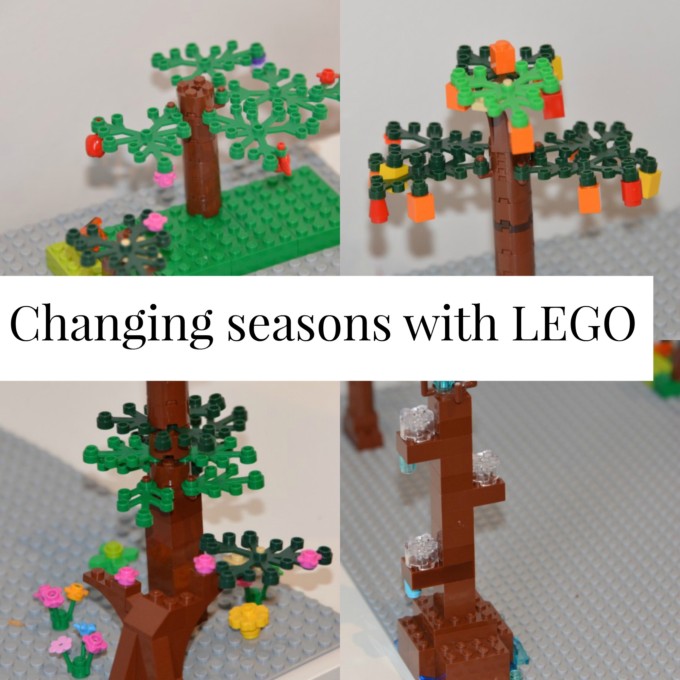
Fine Motor Skills Resources
Learning Resources have some great products that are perfect to help with fine motor skills. The tweezers and droppers are great staple items to have around the house, we use them at least a couple of times a week.

More fine motor skills activities
Thread beads onto pipe cleaners, we added the beads in groups of 10, changing the colour for each group and used the finished product as a homemade number string.
Make a slit in a tennis ball and squeeze to open it. Hide a small item and ask a friend to shake it and guess what you've hidden. The squeezing is really good exercise.
Predict how long it will take to pop a set number of bubbles on a sheet of bubble wrap using a thumb and finger, this is a great opportunity for practising recording and displaying data too.
LEGO brick races are great fun. Children can race each other to see who can place the most bricks on a large flat plate using just one hand in a set time.
HAMA beads are brilliant for hand eye coordination.
Red Ted Art has a great post about teaching kids to sew.
Rainy Day Mum has some super simple ideas for helping little ones with fine motor skills at home.
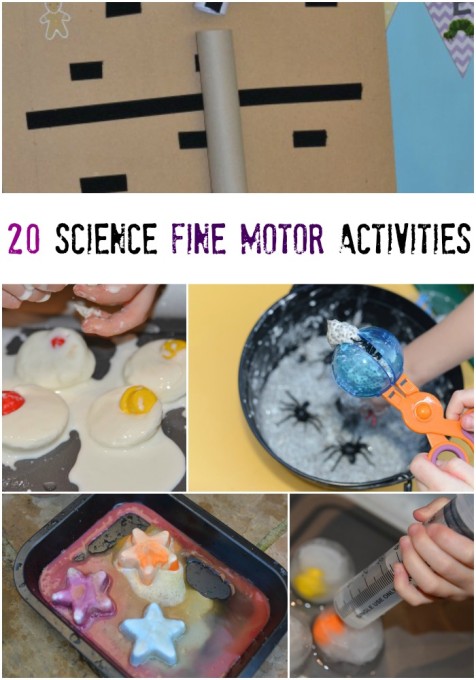
Contains affiliate links
Last Updated on July 11, 2025 by Emma Vanstone
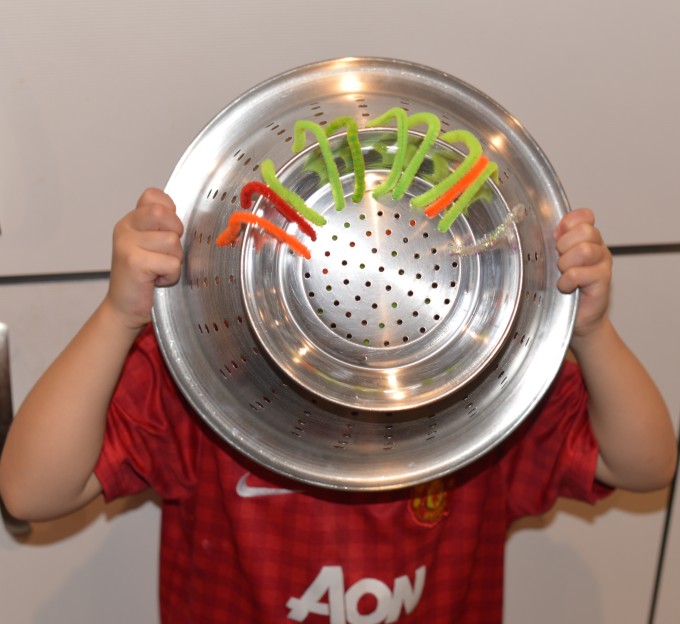
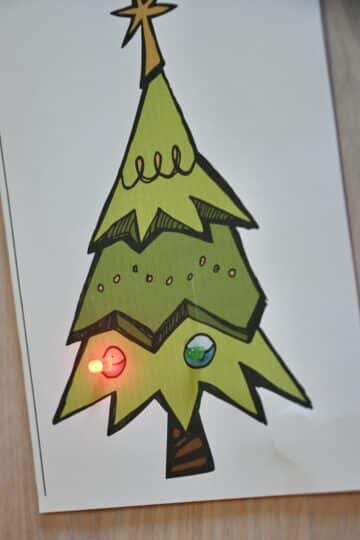
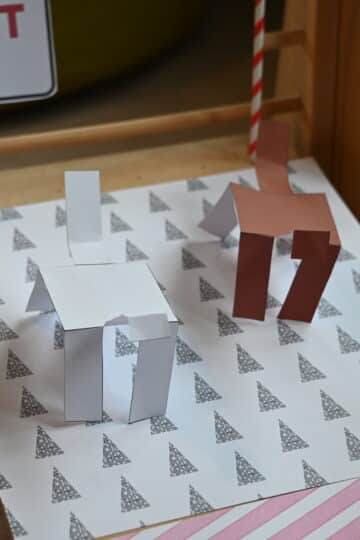
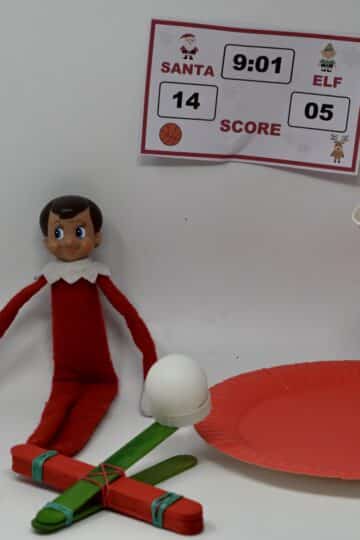
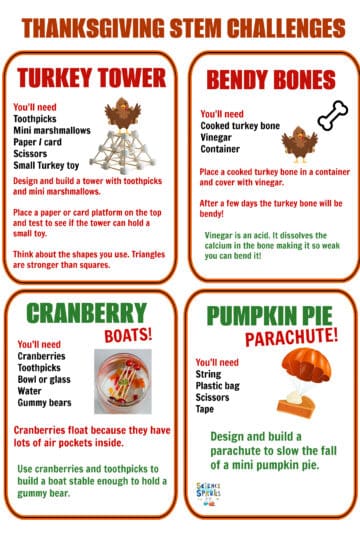
maggy, red ted art says
Brilliant set of activities! Thanks for including our Teaching Kids to Sew post!!!